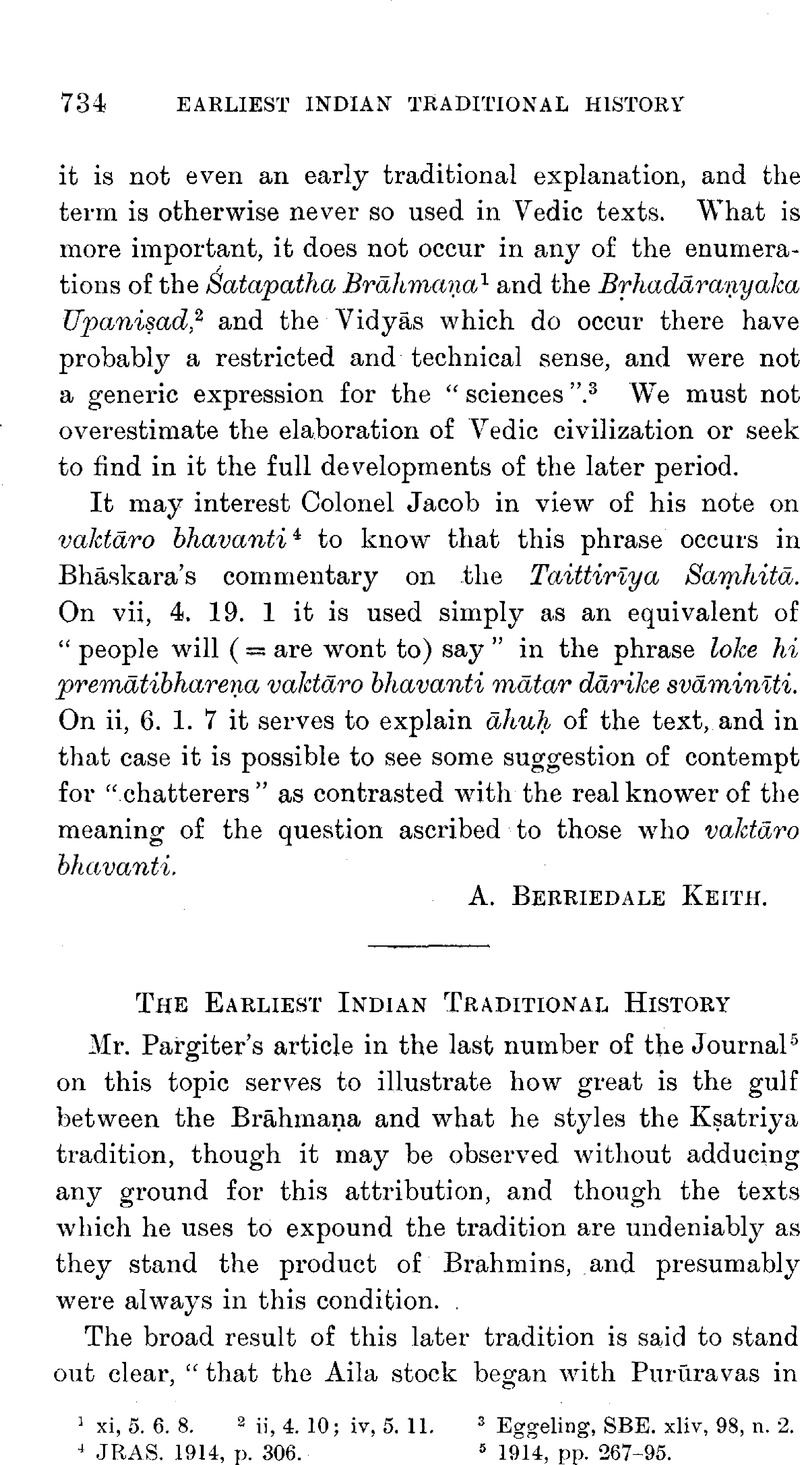No CrossRef data available.
Article contents
The Earliest Indian Traditional History
Published online by Cambridge University Press: 15 March 2011
Abstract

- Type
- Miscellaneous Communications
- Information
- Copyright
- Copyright © The Royal Asiatic Society 1914
References
page 734 note 5 1914, pp. 267–95.
page 735 note 1 JRAS. 1913, p. 417.Google Scholar
page 736 note 1 xviii, 44.
page 736 note 2 1914, p. 293, n. 2.
page 736 note 3 i, 4. 1. 10 sq.
page 737 note 1 See Macdonell, , Sanskrit Literature, pp. 146, 147.Google Scholar
page 737 note 2 The argument for the date of the Ṛgveda from the date of the great battle is not one which I can accept, as I do not believe in the great battle in Vedic times. But this point need not be discussed here.
page 738 note 1 See Oldenberg, , JRAS. 1909, pp. 1095 sqq.Google Scholar; Macdonell, , Vedic Index, i, p. viii.Google Scholar
page 738 note 2 JRAS. 1914, pp. 411–12.Google Scholar
page 738 note 3 Ibid. p. 118.
page 739 note 1 Sanskrit Literature, p. 11.Google Scholar
page 739 note 2 Macdonell, , op. cit. p. 230.Google Scholar
page 739 note 3 sarvam āyur eti is the regular Brāhmaṇa tag, and life is 100 years in Saṃhitā and Brāhmaṇa alike.
page 740 note 1 There is no available material for dating definitely the Purāṇas in their present form; that Purāṇas have existed from very early times is certain, but there is no reasonable possibility of any of the existing Purāṇas antedating 300 a.d. and very probably no one is at all as old as this. It is impossible, therefore, in using the Purāṇas as repositories of ancient legend to ignore the fact that they have been subject to constant change and alteration, and that if they are cited to embrace a tradition of 700–600 b.c. at least 1,000 years of possible manipulation intervene. And this is the basis for a rejection of contemporaneous or nearly contemporaneous tradition.
page 741 note 1 JRAS. 1914, p. 278, n. 5.Google Scholar
page 741 note 2 Ibid. p. 285, n. 3.
page 741 note 3 Mr. Pargiter compares our title “Prime Minister” (p. 284, n. 5)Google Scholar. But there is surely nothing inherently humorous about that title, which is simply “First Minister”, a form of title which is still extant in Canada.


